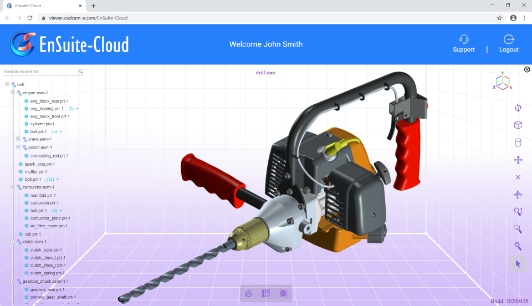EDEN PRAIRIE, MN and BOSTON, MA, USA, May 11, 2020 – More than 200 teams from around the world have submitted designs for a rapidly deployable, minimum viable ventilator as part of a hackathon hosted on GrabCAD.com, with round one ending May 1. The CoVent-19 Challenge has now shifted to a finalist round. Seven teams have been selected to participate and will be building working prototypes for testing by a team of judges led by a dozen anesthesiology resident physicians from Massachusetts General Hospital.
“Healthcare systems around the world continue to face a period of great uncertainty caused by the COVID-19 pandemic,” said Dr. Richard Boyer, founder and director of the CoVent-19 Challenge. “Will they be able to provide invasive mechanical ventilation to all who need it? As anesthesiologists, we are experts at using ventilators to care for critical ill patients and believe there is an opportunity for innovative new designs particularly for areas where standard mechanical ventilators may be hard to obtain.”
Phase 1 submissions included teams from 43 different countries, including Algeria, Bangladesh, Canada, Egypt, Greece, India, Malaysia, the Netherlands, Poland, Singapore, Spain, the United Kingdom, and the United States. The finalist teams are:
- SmithVent, a team of Smith College (Northampton, Mass.) engineering alumni and friends.
- CORE Vent, submitted by Ross Hunter of Armadilla Ltd. (Edinburgh, Scotland)
- InVent Pneumatic Ventilator, submitted by fuseproject, a design and innovation firm (San Francisco), Cionic, a medical device technology company (San Francisco), and a mechanical engineering team from Accenture (Seattle).
- RespiraWorks, a global team of dozens of engineers, healthcare workers and other professionals with a focus on developing countries and low-resource communities.
- OP Vent, submitted by a team from Nvidia (Santa Clara, Calif.), Waymo (Mountain View, Calif.), Stanford University (Palo Alto, Calif.), and VA Palo Alto Health Care System.
- Lung Evolve, submitted by an engineering team from the Universidad Nacional (Bogotá, Colombia) and Universidad Pontificia Bolivariana (Medellín, Colombia).
- Baxter Ventilator, submitted by a team of educators, students, and alumni from Baxter Academy for Technology and Science (Portland, Maine).
“The CoVent-19 Challenge has been an amazing demonstration of what’s possible when a global community of innovators comes together for the common good,” said Stratasys Chief Innovation Officer Scott Crump, one of the challenge judges. “In one month, we have gone from a problem statement to remarkably creative solutions from students and professionals, engineers and designers, from everywhere. It brightens my spirit during what is otherwise a pretty dark time for our world.”
In addition to hosting the challenge on its GrabCAD site, Stratasys (NASDAQ: SSYS) has provided a team of three application engineers to work with the seven finalist teams to help them build working prototypes utilizing Stratasys 3D printers as needed. The prototypes will be evaluated using a test bed to determine which design provides the best combination performance against safety, reliability, manufacturability, affordability, and simplicity.
The goal is to declare a winner by the beginning of June, with the CoVent-19 Challenge residents then working with the winning team to bring it to market, including securing FDA approval for the device.
Other sponsors of the CoVent-19 Challenge include Ximedica, Valispace, HackFund and Yelling Mule.
About Stratasys
Stratasys is a global leader in additive manufacturing or 3D printing technology and is the manufacturer of FDM®, PolyJet Technology, and stereolithography 3D printers. The company’s technologies are used to create prototypes, manufacturing tools, and production parts for industries, including aerospace, automotive, healthcare, consumer products and education. For more than 30 years, Stratasys products have helped manufacturers reduce product-development time, cost, and time-to-market, as well as reduce or eliminate tooling costs and improve product quality. The Stratasys 3D printing ecosystem of solutions and expertise includes 3D printers, materials, software, expert services, and on-demand parts production. Online at: www.stratasys.com.
To learn more about Stratasys, visit www.stratasys.com, the Stratasys blog, Twitter, LinkedIn, or Facebook. Stratasys reserves the right to utilize any of the foregoing social media platforms, including the company’s websites, to share material, non-public information pursuant to the SEC’s Regulation FD. To the extent necessary and mandated by applicable law, Stratasys will also include such information in its public disclosure filings.








